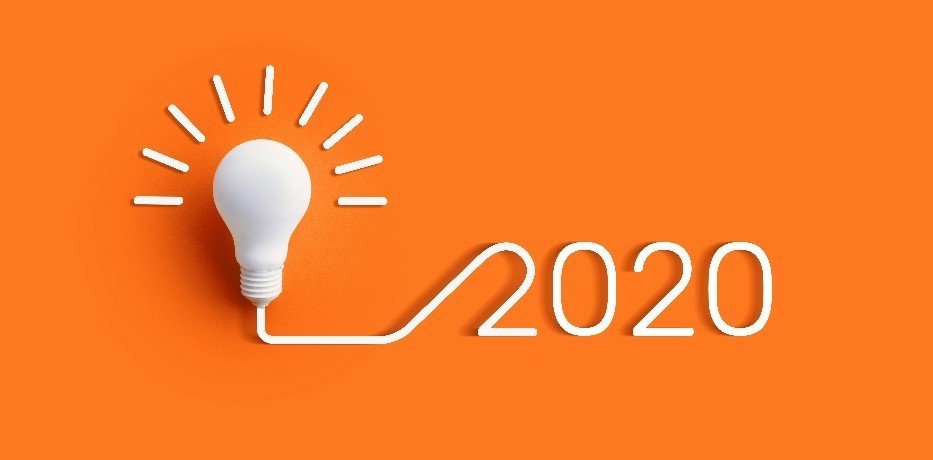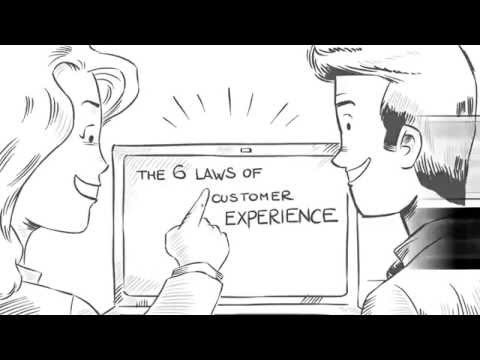6 Ways to Enhance CX in 2020

Customer behaviors and expectations develop quickly. To distinguish themselves, companies have to adjust their strategy continuously. The need to fulfill outstanding customer service has nevermore been more significant than now – customers use digital channels more than ever. They expect seamless journeys through their transactions, even when switching between those channels.
So, what are the new expectations of customers? How do you stay ahead of the competition in 2020? Take a look at our essential trends to consider in 2020.
1. Customer service is not limited to a department
As customer experience becomes the main criterion of choice, this area is gaining more importance within companies. While it used to be seen as a cost center solely dedicated to answering customer inquiries, it now has a more central role and is transitioning to a profit center.
We can see a growing interest in customer experience from the C-suite. A YouGov survey found that 97% of executives believe customer satisfaction is key to business success. When top management understands the value of CX, this transposes to the company as a whole. It contributes to driving investment in this area and develops a culture centered around the customer.
To further this vision, companies must rely on a connected ecosystem of tools. An open customer engagement platform provides a seamless experience and promotes the flow of data across divisions. Integrating this tool with CRM or BI enables the leverage of information from customer interactions, which can be used by other departments such as sales and marketing.
2. Customer experience becomes the main criteria of choice
In 2015, a Walker study predicted that, by 2020, customer experience would overtake price and product as the key brand differentiator.
Modern trends have confirmed this shift. With more competition and fewer opportunities to compete on product and price, customer experience is more important than ever. We now live in “the Experience Economy,” where customers value experience more than the actual product. Leading companies such as Netflix and Amazon reflect this evolution by providing a convenient experience minimizing the customer’s efforts.
HubSpot found that 93% of customers are more likely to be repeat customers at companies with excellent customer service. On the other hand, CITE Research found that customers have ceased doing business with brands an average of four times (five times if we focus on millennials) in the past year after a bad customer service experience.
Prioritizing customer experience is determined to have a positive economic impact: 84% of companies that work to improve this area report an increase in their revenue.
3/ UCaaS + CCaaS make customer experience better
The transition from on-premise to cloud solutions brings several benefits for companies, such as reduced implementation time, costs reduction, and more open frameworks for integrations. UCaaS (Unified Communications as a Service) and CCaaS (Contact Center as a Service) are two of these main cloud services.
UCaaS is dedicated to internal communications between employees, and CCaaS facilitates interactions with customers. They used to operate in two distinct spheres, and these areas are now linked thanks to the Cloud.
This integration encourages a more satisfying customer experience. As aforementioned, customer experience is achieving a more central role and is not limited to a department. In that way, any employee can now have an impact on CX. When frontline employees lack information, they need to access those with the right expertise inside the company, ideally while engaged with the customer. Still, 70% of employees report they have to leave the customer communication app to consult with coworkers – increasing customer wait times and time to resolution.
Having a single platform for both CC and UC reduces the time needed to switch between apps, improving both the employee and customer experience. In a customer-centric organization, all employees have an impact on customer service. Integrating UCaaS and CCaaS is a necessary step to support this vision and is contributing to improved customer satisfaction, retention, and sales growth.
4. The majority of customer interactions are becoming digital
Digital channels are gaining more and more important for customer interactions. Email, social media, and now messaging has emerged as options to phone calls. Customers are used to these channels to communicate within their private circle and anticipate to use the same with organizations.
The multiplication of channels for customer service and new customer habits are supporting the growth of digital. More adapted to customers’ lifestyles, these channels allow them to contact brands on their terms. While the phone is still used, there is a general decrease in its use.
By 2022, Gartner predicts that 72% of customer interactions will involve emerging technologies such as messaging, mobile applications, and chatbots, up from 11 percent in 2017. They also predict that, by that time, phone conversations will make up merely 12% of customer service interactions – vs. 41% in 2017.
The growth of digital requires not only to adopt new channels but also a completely new approach. The new challenge for companies is to go beyond omni-channel to offer multiexperience. It suggests being able to provide seamless and effortless experiences across all digital touchpoints. It becomes apparent that customers are not thinking in terms of “channels” anymore: they naturally choose the contact method that is the most convenient to them.
To adapt to this evolution, brands must adopt an omni-digital strategy that allows you to centralize the management of channels. With this approach, silos disappear, and agents manage any channel with a single tool. We don’t know what customers’ preferences will be tomorrow: by becoming channel-agnostic, brands gain the flexibility to deploy new touchpoints where and when customers expect them quickly.
5. Live-chat use is declining
The death of live-chat is not happening anytime soon. Live-chat is still widely used and relevant for customer service, especially for sales. However, it has some limits, such as its synchronous character, the lack of conversation history, and the limited compatibility with mobile devices.
Messaging is the fastest-growing channel for customer service and tackles these limits. Its asynchronous character doesn’t require customers and agents to stay focused on the conversation. It keeps the conversation history with compatibility across multiple devices. Like live-chat, it can be offered while customers browse the website to answer their questions quickly.
Even though, Messaging is mainly adopted through external channels such as WhatsApp and Messenger. Plus, you can add messages to the brand’s mobile app, thanks to in-app messaging. This provides more control and flexibility on the features and data. The next wave of this technology will be cross-platform: in that way, the brand will be able to deploy its proprietary channels on mobile and desktop with continuity in the conversation.
6. AI empowers customer service agents
As a Forrester study points out, companies must start creating Human-Machine collaborations to free employees to do more meaningful work. There are many ways in which AI can be leveraged to assist agents in their daily tasks. By routing messages, collecting customer information, or providing a knowledge base, AI is saving agents much time. This approach allows them to focus on more value-add tasks such as solving complex issues, identifying opportunities for upselling, or creating a more personalized experience.
A collaboration between chatbots and agents also answers to customers’ expectations: 86% of customers believe there should be an “escalate to agent” option when talking to a chatbot. In that way, they enjoy the best of both parties: instant answers from chatbots for basic requests and interactions with an agent for more complex situations.
Customer experience will rule 2020
2020 will be defined by the central role given to customer experience. This shift began a few years ago and now becomes a reality for most companies. Brands convinced of the value of CX are prioritizing this area to match customers’ expectations more accurately. It is a challenge now to adopt the right strategy and tools, providing multi-experience.





Leave a Comment